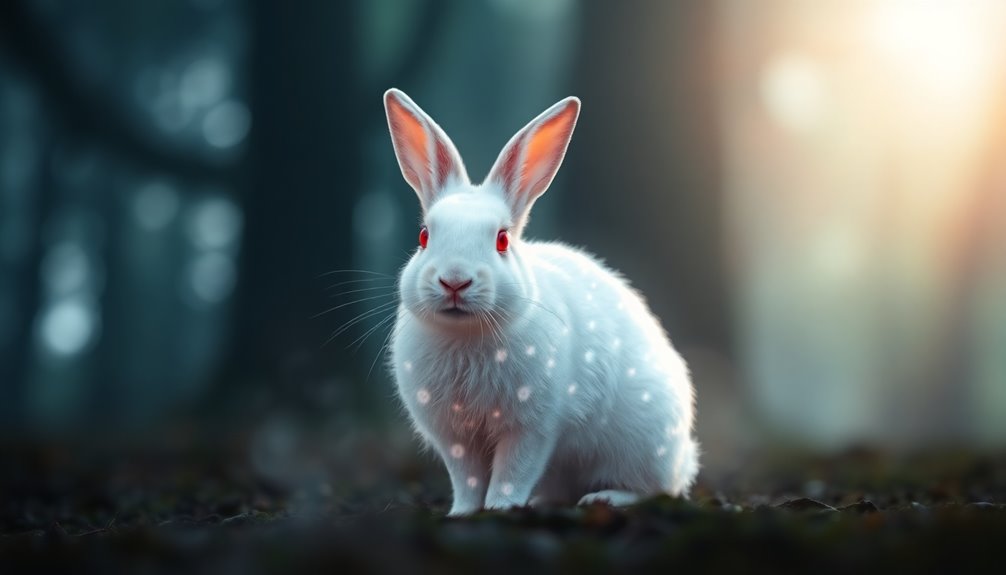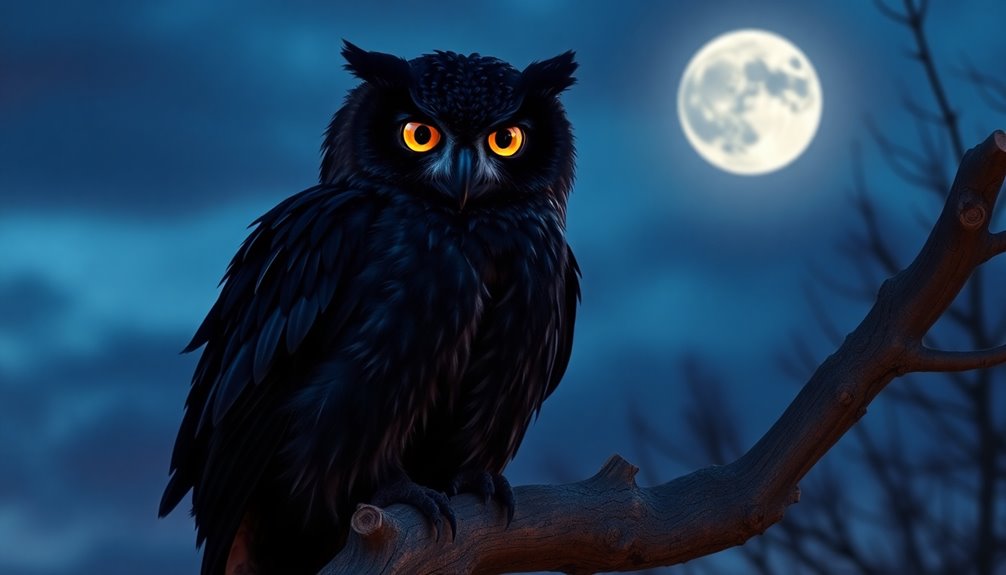Losing your engagement ring often symbolizes a crucial moment in your life, urging you to reflect on what truly matters. It's a reminder of the impermanence of material possessions and relationships, prompting you to let go of old patterns. This loss can reveal emotional connections and areas in your relationship needing improvement, sparking personal growth. You'll find it's also a spiritual lesson, guiding you to embrace change and trust in life's unfolding. Accepting this transition fosters resilience and peace, opening the door to new beginnings. Discover more insights and lessons that loss can teach you about yourself and your journey.
Key Takeaways
- Losing an engagement ring symbolizes the need to release old patterns and embrace the changes inherent in relationships and life.
- The loss prompts reflection on emotional connections, encouraging deeper communication and alignment with personal values within the relationship.
- It serves as a spiritual lesson, reinforcing faith and guiding individuals toward necessary personal growth and transformations.
- Embracing the impermanence of the ring fosters acceptance, allowing for resilience and opening pathways to new opportunities in life.
- Letting go of the past through loss cultivates inner peace, promoting personal growth and renewed purpose in future endeavors.
Ending Old Patterns

When you lose an engagement ring, it often signals a pivotal moment in your life, urging you to recognize the need to let go of old patterns. This process isn't just about losing a piece of jewelry; it's about releasing identities and behaviors that no longer serve you. Embracing change is essential in various aspects of life, much like the significance of software quality assurance in ensuring reliable outcomes in technology. Recognizing narcissistic tendencies in relationships can also be crucial during this period of transformation.
As you embrace this transition, you might feel the weight of past traumas and social conditioning resurfacing, especially during challenging times. Acknowledging these feelings is crucial, as they're a natural part of your spiritual growth. Confronting your repressed emotions reveals insights that are essential for moving forward, similar to the importance of seeking professional advice during life changes. Understanding the impact of emotional dysregulation can also provide clarity on your interactions and responses during this transformative phase. Additionally, nurturing a growth mindset can empower you to embrace new possibilities and overcome obstacles.
To identify these old patterns, engage in deep self-reflection. Examine your attitudes and actions, and understand how they contribute to your spiritual regression. This is your opportunity to shed old programs and heal unresolved aspects of your past.
As you transition, compare your old and new states. Use meditation to shift between these experiences, envisioning yourself firmly in your new pattern. Surround yourself with images and feelings that resonate with this change.
Reflecting on Relationships

Losing an engagement ring prompts you to reflect deeply on your relationship and the commitments you've made. This loss can symbolize a feeling of diminished commitment or a shift in your emotions towards your partner. It encourages you to evaluate whether your relationship aligns with your personal values and expectations. You may feel guilt or worry, which can amplify your desire to assess the relationship's overall health.
As you reflect, consider areas that might need improvement, such as communication and trust. The experience may reveal a need for open conversations with your partner, paving the way for growth. You might also find yourself reassessing your priorities—what truly matters to you both as a couple. This process of evaluation may signal the need to release outdated patterns, allowing you to move towards a healthier relationship dynamic. Remember that enhancing your communication skills can significantly improve your connection with your partner.
While the ring is a material symbol of love, remember that your commitment transcends that physical object. This moment can emphasize the importance of maintaining a strong emotional connection with your partner.
Spiritual Lessons Uncovered

Often, losing an engagement ring reveals profound spiritual lessons that can guide your personal growth. This event often signals a need to release old patterns and habits that no longer serve you. The loss can encourage you to embark on a new journey of self-discovery, pushing you to explore different spiritual paths.
As you search for the lost ring, you might find yourself developing patience and persistence, learning to trust in divine timing. This journey can deepen your understanding of yourself and your connection to Spirit, inviting you to engage in spiritual practices like meditation or prayer. For instance, the experience of searching for the original ring may lead to unexpected insights about your resilience and faith.
Moreover, losing a ring serves as a powerful reminder of life's impermanence. It nudges you to let go of attachments to material possessions and even relationships, fostering peace within the unknown. Embracing this impermanence can lead to a greater acceptance of change and the transient nature of life.
Lastly, the loss can be viewed as divine guidance, steering you toward your highest good, even if the reasoning isn't immediately clear. Trusting in this guidance reinforces your faith that everything unfolds for a reason. Embrace these lessons as opportunities for profound spiritual growth.
Embracing Change and Fear

Embracing change can feel daunting, especially when it stirs up fear and uncertainty. You might find it hard to accept that nothing is permanent, including your possessions and relationships. Recognizing this impermanence helps you let go of attachments and reduces your stress.
By trusting in the process, you can navigate uncertainty with faith and patience. Each experience, whether good or bad, contributes to your personal and spiritual growth. Change is essential for reaching higher frequencies, which can further enhance your journey. Visualizing desired outcomes can also help you maintain focus during transitional times.
Mindfulness practices, like meditation and deep breathing, keep you present and centered during these tumultuous times. Staying mindful increases your awareness of your thoughts and emotions, allowing you to observe without being overwhelmed.
It's essential to reframe change as an opportunity for growth. Viewing it positively cultivates a mindset of acceptance and encourages curiosity about the unknown.
Understanding your fear is crucial, too. Acknowledge it and explore its root cause; this recognition allows you to address it head-on.
Overcoming resistance is vital for personal growth, so use positive affirmations to push past irrational fears. By embracing change and the fear that accompanies it, you open yourself to new possibilities and deeper self-discovery.
Divine Guidance and Protection

When you experience the loss of an engagement ring, it can feel overwhelming, yet this moment might also carry profound spiritual significance. This loss could be a universal nudge, prompting you to reconsider your current situation or relationship. It encourages you to engage in reflection and introspection, allowing for a deeper evaluation of your values and commitments.
Moreover, losing the ring might serve as a spiritual test, fostering personal growth and revealing necessary changes. It can protect you from potential harm or negative influences, guiding you toward a better path. This event often prevents future problems by breaking patterns that no longer serve your spiritual well-being. The Holy Spirit functions as a tangible reminder of God's presence and promises, reinforcing the importance of faith during challenging times.
As you navigate this experience, trust that the universe has a divine plan. Embrace this opportunity for self-discovery and reconnect with your spiritual practices. The loss may remind you of spiritual promises and the importance of maintaining faith in divine timing.
Ultimately, accepting the loss as part of a greater journey can lead to peace and a renewed sense of purpose. Trust that you're being guided toward a brighter future, even if it doesn't seem clear right now.
Accepting Impermanence and Surrender

Losing an engagement ring can be a stark reminder of life's impermanence, urging you to confront the reality that everything, including relationships and material possessions, is transient. This experience symbolizes the need to detach from physical objects and focus on the deeper, intangible aspects of your connections.
As you navigate the initial panic and grief, you may find that acceptance leads to a profound understanding of life's transience. Embracing surrender means letting go of fear and recognizing that life is filled with ups and downs. In this light, losing a significant piece of jewelry can mirror the significance of the wedding ring, which represents not just a bond but also the blessings and grace in your life.
Searching for your lost ring can teach you patience and trust in divine timing, highlighting the importance of accepting your current circumstances. This acceptance can be liberating, making space for new beginnings and helping you release old patterns that no longer serve you.
Ultimately, embracing impermanence and surrender can foster peace within the unknown. Acknowledging the emotional significance of the lost ring allows you to reflect on what truly matters in your life.
Frequently Asked Questions
What Should I Do Immediately After Losing My Engagement Ring?
If you lose your engagement ring, stay calm and take a deep breath.
Assess where you last saw it and retrace your steps to that location. Check thoroughly around your home, workplace, or any other places you visited.
Ask friends or family to help you search. If you can't find it, inform your partner and contact your insurance company or jeweler for advice on replacement options.
How Can I Prevent Losing Important Items in the Future?
To prevent losing important items in the future, start by designating a specific home for each item—like a key tray near the door for your keys.
Develop a routine that includes a checklist for essentials before leaving.
Use technology, such as reminders or tracking devices, to keep tabs on your belongings.
Finally, maintain a clutter-free environment to reduce distractions, making it easier to keep track of everything you need.
Is There a Specific Ritual for Letting Go of Attachment?
Yes, there are specific rituals for letting go of attachment. Start by grounding yourself through meditation and setting clear intentions for what you want to release.
Journaling your thoughts helps you process emotions, while visualization can guide you through the release. You might use symbolic tools, like scissors, and cleanse your energy with water or smudging.
Finally, reflect on the experience, fill the void with positive energy, and express gratitude for your journey.
Can Losing an Engagement Ring Affect My Spiritual Practice?
Losing an engagement ring can definitely affect your spiritual practice.
It might prompt you to reassess your values and attachments, encouraging deeper introspection. You could find yourself reflecting on impermanence and the significance of material items in your life.
This experience can also open up space for growth and self-discovery, leading you to strengthen your connection with your spiritual beliefs.
Embracing this loss may ultimately guide you towards a more profound spiritual journey.
How Do I Support a Partner Who Has Lost Their Engagement Ring?
When your partner loses their engagement ring, stay calm and reassure them that it doesn't diminish your love.
Help them retrace their steps and search thoroughly, keeping the mood light. Notify them as soon as possible, and consider reaching out to the jeweler or insurance for options.
Discuss replacement ideas together, emphasizing the bond you share rather than the material object.
Focus on supporting each other through this stressful moment.
Conclusion
Losing your engagement ring can feel devastating, but it's also a powerful invitation to reflect and grow. Embrace the lessons in letting go, and recognize that change is a natural part of life. Trust that this experience is guiding you toward deeper understanding and self-discovery. By accepting impermanence, you open yourself to new possibilities. Remember, each ending paves the way for new beginnings, allowing you to move forward with strength and clarity.











